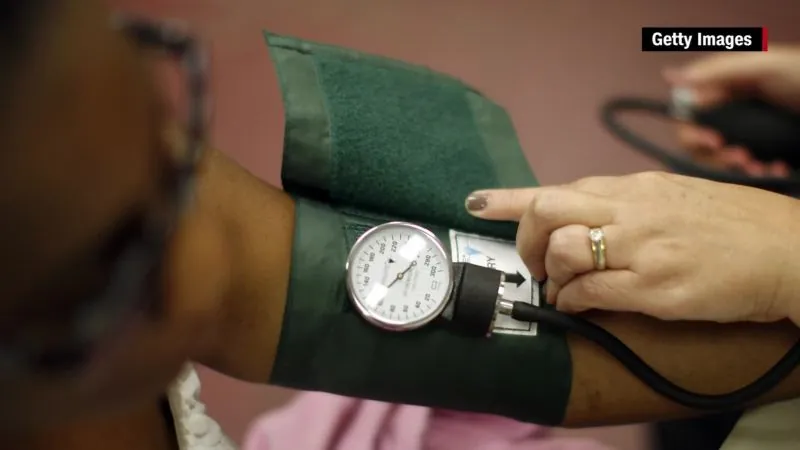
Unlock the Secret to Accurate Blood Pressure Readings: The Position of Your Arm Matters!
2024-10-08
Author: Ting
Unlock the Secret to Accurate Blood Pressure Readings: The Position of Your Arm Matters!
A recent study has unveiled a startling truth: the position of your arm during blood pressure checks can significantly affect the results, potentially leading to misdiagnoses and unnecessary treatments. Whether you're monitoring your blood pressure at home or at the doctor’s office, proper arm placement is essential for accurate readings.
According to the research published in JAMA Internal Medicine, incorrect arm positioning can lead to readings that are “markedly higher” than those taken with the arm correctly supported. The ideal method is to have your arm resting on a table, with the cuff placed at heart level. Failing to do so might result in a serious overestimation of both systolic and diastolic pressures.
The study revealed that resting the arm on the lap can inflate systolic readings by nearly 4 mm Hg, while allowing the arm to hang by the side can increase systolic measurements by more than 6 mm Hg. These differences can lead to an individuals being misclassified as having hypertension, which could trigger unnecessary medical intervention.
What is Hypertension?
High blood pressure, or hypertension, is typically defined as consistent readings of 130/80 mm Hg or higher. Misdiagnosing someone as hypertensive can not only cause undue stress but also result in complications from unwarranted treatments.
Dr. Tammy Brady, the senior author of the study and an expert at Johns Hopkins University, emphasizes the critical need for healthcare providers to pay close attention to arm positioning during these measurements. "It’s vital to educate both healthcare providers and patients about the importance of proper measurement techniques," she stated.
The Study's Insights
In this groundbreaking study, researchers enlisted 133 adults aged 18 to 80, who were observed over various arm positioning scenarios. Those with their arms correctly positioned on the desk averaged a blood pressure reading of 126/74 mm Hg. This contrasts sharply with the readings of individuals who rested their arms in their laps (130/78 mm Hg) or allowed their arms to hang (133/78 mm Hg).
Dr. Brady was taken aback by the magnitude of the discrepancies, noting that common observation and existing literature had not predicted such wide variances.
There are physiological explanations for these differences, as an unsupported arm can cause the muscles to tense and if the cuff is placed lower than heart level, gravity can artificially inflate the blood pressure reading.
Guidelines for Accurate Readings
The following guidelines can help ensure accurate blood pressure measurements:
1. **Correct Cuff Size**: An improperly fitted cuff can skew results, particularly for patients needing larger cuffs. Recent studies have shown standardized cuffs can lead to significantly inaccurate readings.
2. **Preparation Before Measurement**: In the half-hour leading up to the measurement, refrain from smoking, exercising, consuming caffeine, alcohol, or engaging in stressful conversations.
3. **Proper Positioning**: Sit upright with back straight, feet on the floor, and avoid crossing legs. Rest your arm comfortably at heart level, without any clothing obstructing the cuff.
4. **Home vs. Clinic Readings**: Interestingly, research now indicates that blood pressure readings taken at home often provide a more accurate reflection of everyday blood pressure compared to those taken in the often stressful clinic environment.
A Call to Action
The implications of this study are clear: nearly half of American adults suffer from high blood pressure, yet only a quarter have it under control, according to the CDC. Misreadings can lead to wrong treatment decisions, increasing the risk of heart disease and stroke—two leading causes of death in the country.
Dr. Dave Montgomery, a cardiologist, remarks on the importance of accurate readings. "A difference of 4 to 5 mm Hg due to arm positioning might seem trivial, but for someone already diagnosed with hypertension, it could signal a need for more aggressive treatment."
As this study raises awareness on proper arm positioning, both patients and healthcare professionals must advocate for accurate measurement techniques. After all, your health could depend on it!




 Brasil (PT)
Brasil (PT)
 Canada (EN)
Canada (EN)
 Chile (ES)
Chile (ES)
 España (ES)
España (ES)
 France (FR)
France (FR)
 Hong Kong (EN)
Hong Kong (EN)
 Italia (IT)
Italia (IT)
 日本 (JA)
日本 (JA)
 Magyarország (HU)
Magyarország (HU)
 Norge (NO)
Norge (NO)
 Polska (PL)
Polska (PL)
 Schweiz (DE)
Schweiz (DE)
 Singapore (EN)
Singapore (EN)
 Sverige (SV)
Sverige (SV)
 Suomi (FI)
Suomi (FI)
 Türkiye (TR)
Türkiye (TR)